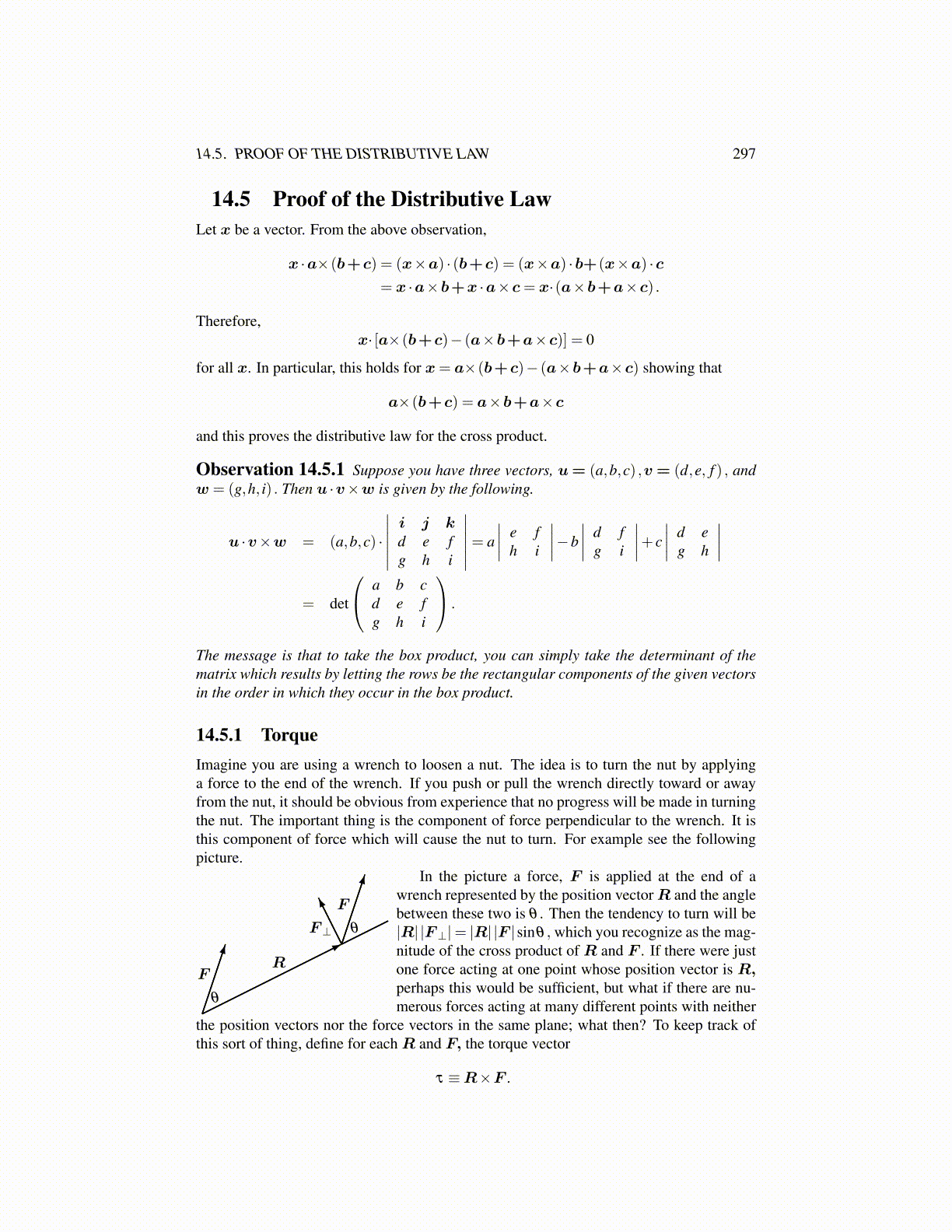
14.5. PROOF OF THE DISTRIBUTIVE LAW 297
Lemma 14.4.10 Let a,b, and c be vectors. Then (a×b) ·c= a· (b×c) .
Proof: This follows from observing that either (a×b) ·c and a·(b×c) both give thevolume of the parallelepiped or they both give −1 times the volume.
14.5 Proof of the Distributive LawLet x be a vector. From the above observation,
x ·a×(b+c) = (x×a) · (b+c) = (x×a) ·b+(x×a) ·c= x ·a×b+x ·a×c= x·(a×b+a×c) .
Therefore,x· [a×(b+c)− (a×b+a×c)] = 0
for all x. In particular, this holds for x= a×(b+c)− (a×b+a×c) showing that
a×(b+c) = a×b+a×c
and this proves the distributive law for the cross product.
Observation 14.5.1 Suppose you have three vectors, u= (a,b,c) ,v = (d,e, f ) , andw = (g,h, i) . Then u ·v×w is given by the following.
u ·v×w = (a,b,c) ·
∣∣∣∣∣∣i j kd e fg h i
∣∣∣∣∣∣= a∣∣∣∣ e f
h i
∣∣∣∣−b∣∣∣∣ d f
g i
∣∣∣∣+ c∣∣∣∣ d e
g h
∣∣∣∣= det
a b cd e fg h i
.
The message is that to take the box product, you can simply take the determinant of thematrix which results by letting the rows be the rectangular components of the given vectorsin the order in which they occur in the box product.
14.5.1 TorqueImagine you are using a wrench to loosen a nut. The idea is to turn the nut by applyinga force to the end of the wrench. If you push or pull the wrench directly toward or awayfrom the nut, it should be obvious from experience that no progress will be made in turningthe nut. The important thing is the component of force perpendicular to the wrench. It isthis component of force which will cause the nut to turn. For example see the followingpicture.
F
F
R
F⊥ θ
θ
In the picture a force, F is applied at the end of awrench represented by the position vector R and the anglebetween these two is θ . Then the tendency to turn will be|R| |F⊥|= |R| |F |sinθ , which you recognize as the mag-nitude of the cross product of R and F . If there were justone force acting at one point whose position vector is R,perhaps this would be sufficient, but what if there are nu-merous forces acting at many different points with neither